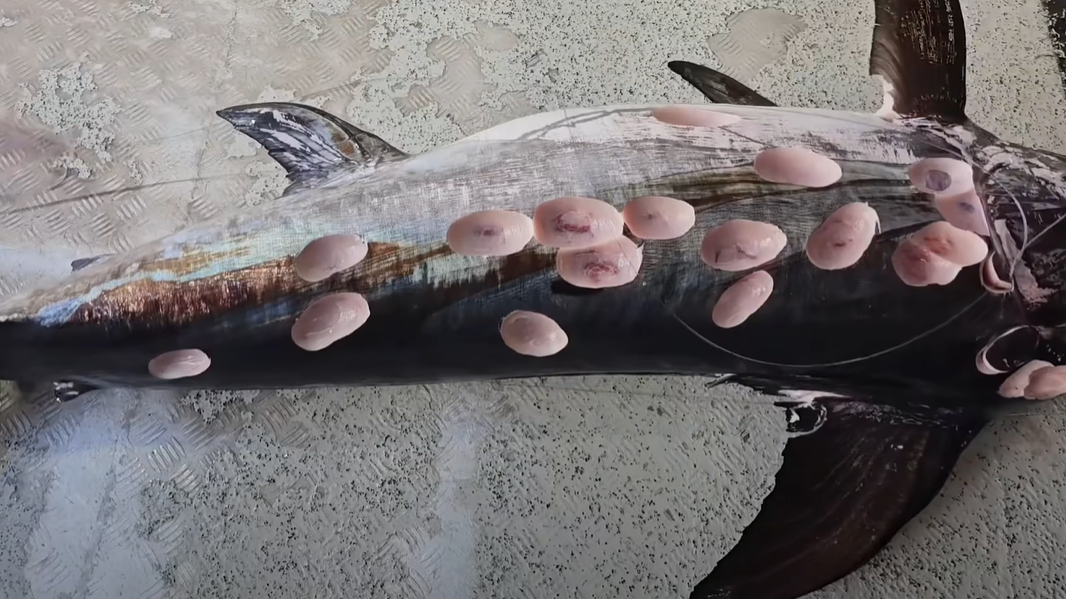
Fishers in Australia have hauled in a swordfish covered in dozens of strange, circular wounds following a shark "pack attack."
Tony "TK" Walker and his crew were fishing off the northeastern coast in the Coral Sea when they reeled in the large fish and soon identified the wounds as cookiecutter shark bites.
"The cookie cutter sharks have had a go at this guy," Walker, a former commercial fisher from New Zealand, wrote in a Facebook post on July 19. "Must've been a pack attack, they made more than a snack out of him, that's for sure."
The swordfish (Xiphias gladius) was alive when the fishers hauled it onto their boat, but the bites were oozing blood, and the creature died shortly afterwards. As shown in a video on Walker's YouTube channel, the wounds were fresh, suggesting the attack occurred minutes before the mutilated swordfish was reeled in.
Related: Shark bites man wading in waist-high water off South Carolina beach resort
Although he regularly catches fish with cookiecutter shark bites, Walker said he'd never seen one so badly mauled. "We see these bites daily and often the fish will have three or four fresh bites and plenty of healed or semi-healed bites," he told Newsweek. But in 40 years of fishing, Walker had "never seen an attack like that."

Cookiecutter sharks (Isistius brasiliensis) are some of the weirdest sharks lurking in the ocean. They are named after their cookie cutter-shaped jaws, which they use to latch onto prey before spinning to scoop out a chunk of flesh, according to the Australian Museum.
These alien-looking sharks only grow to around 20 inches (50 centimeters) long, but they terrorize animals of all sizes, mostly around the coast of Australia and Tasmania. They are known to attack animals much larger than themselves, including great white sharks (Carcharodon carcharias), whales, orcas (Orcinus orca) and even humans. In 2009, the first and only known cookiecutter shark attack on a human took place off the coast of Hawaii, when a long-distance swimmer was bitten on the chest and left calf.

"They race in while the fish is cruising along and just bite a chunk of meat out," Walker, who founded the company TK Offshore Fishing, told Newsweek. The sharks then dart off with their prize, leaving their prey no time to react, he added. "I would imagine it would be like mosquitoes buzzing around for the large swordfish and tuna."
Cookiecutter sharks may also lure their prey closer by posing as smaller fish, according to the Australian Museum. Their bellies are dotted with light-producing organs called photophores that make them invisible to creatures swimming below them. Only a dark-pigmented collar that lacks photophores stands out against the light that shines through the water from above, which may look like a little fish to other predators and entice them to attack. The cookiecutter shark then ambushes and latches onto the larger predator to remove a disk of its flesh.







